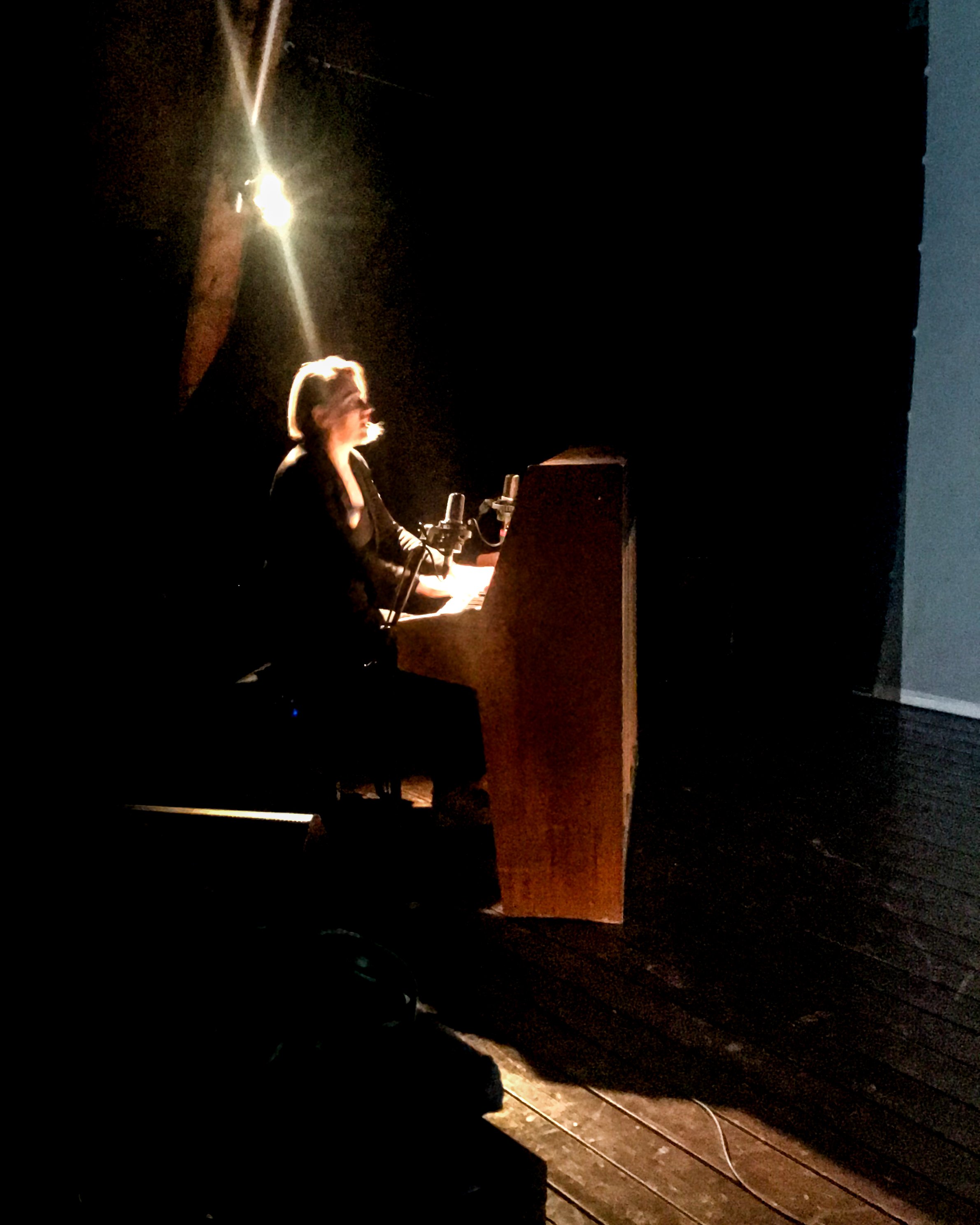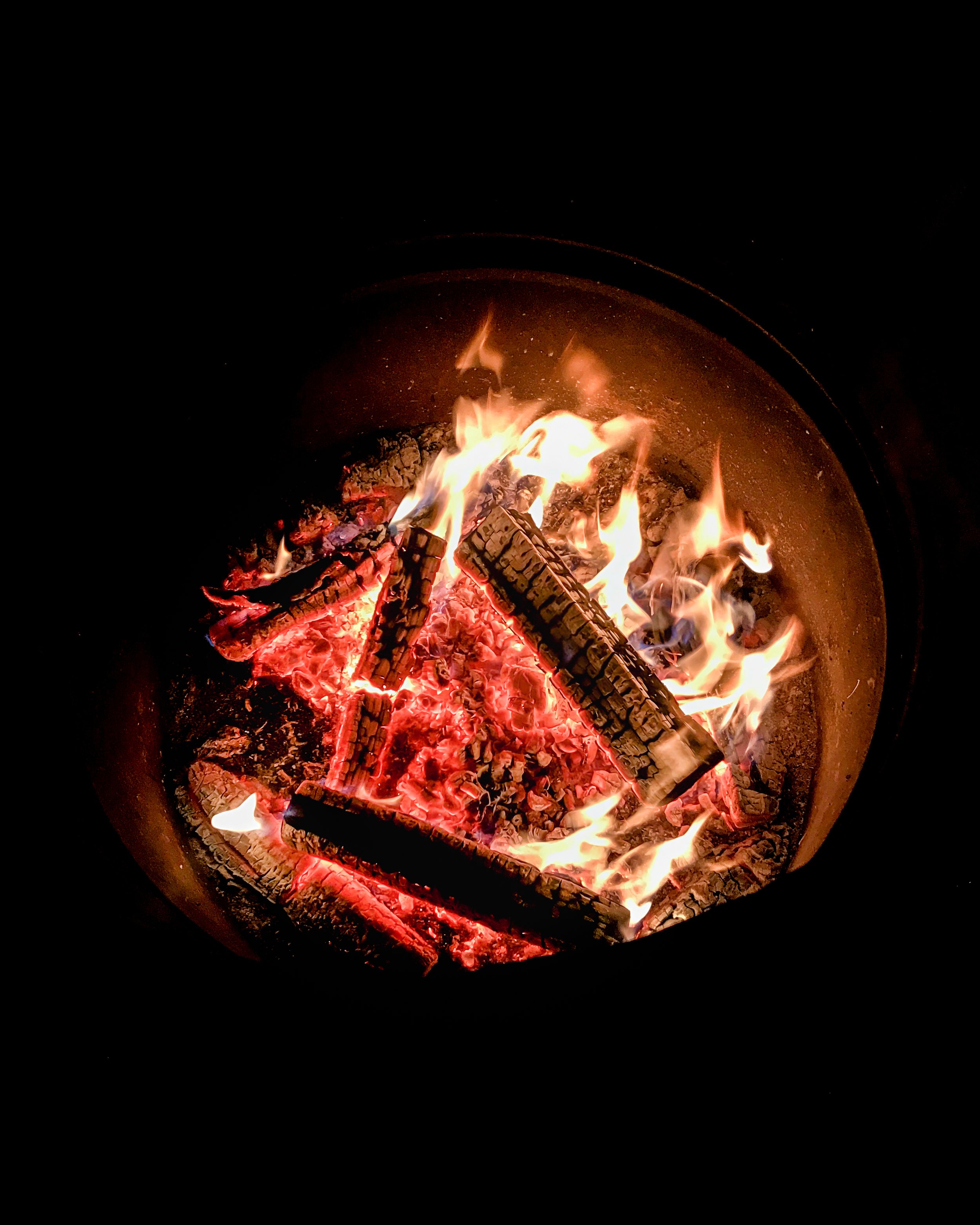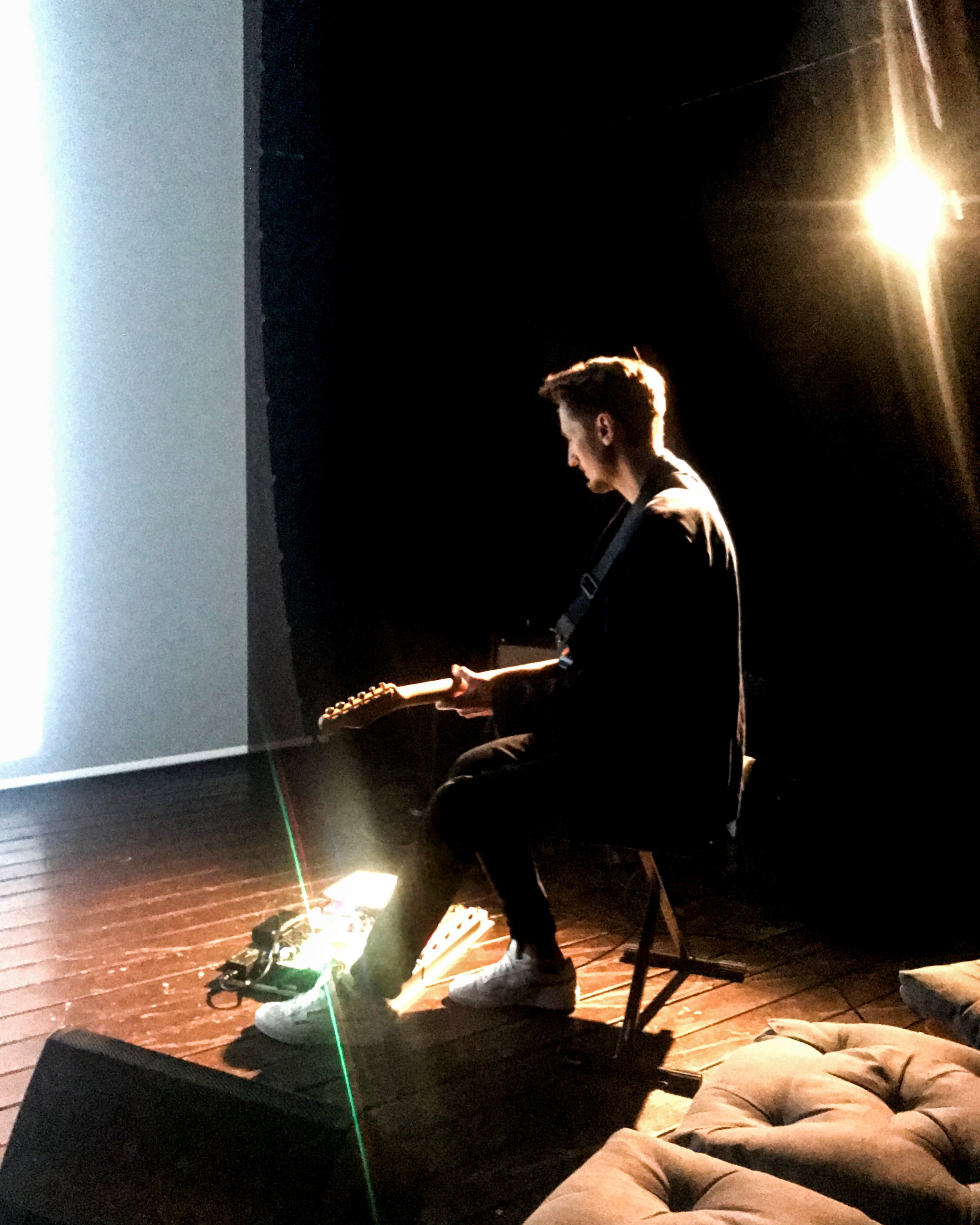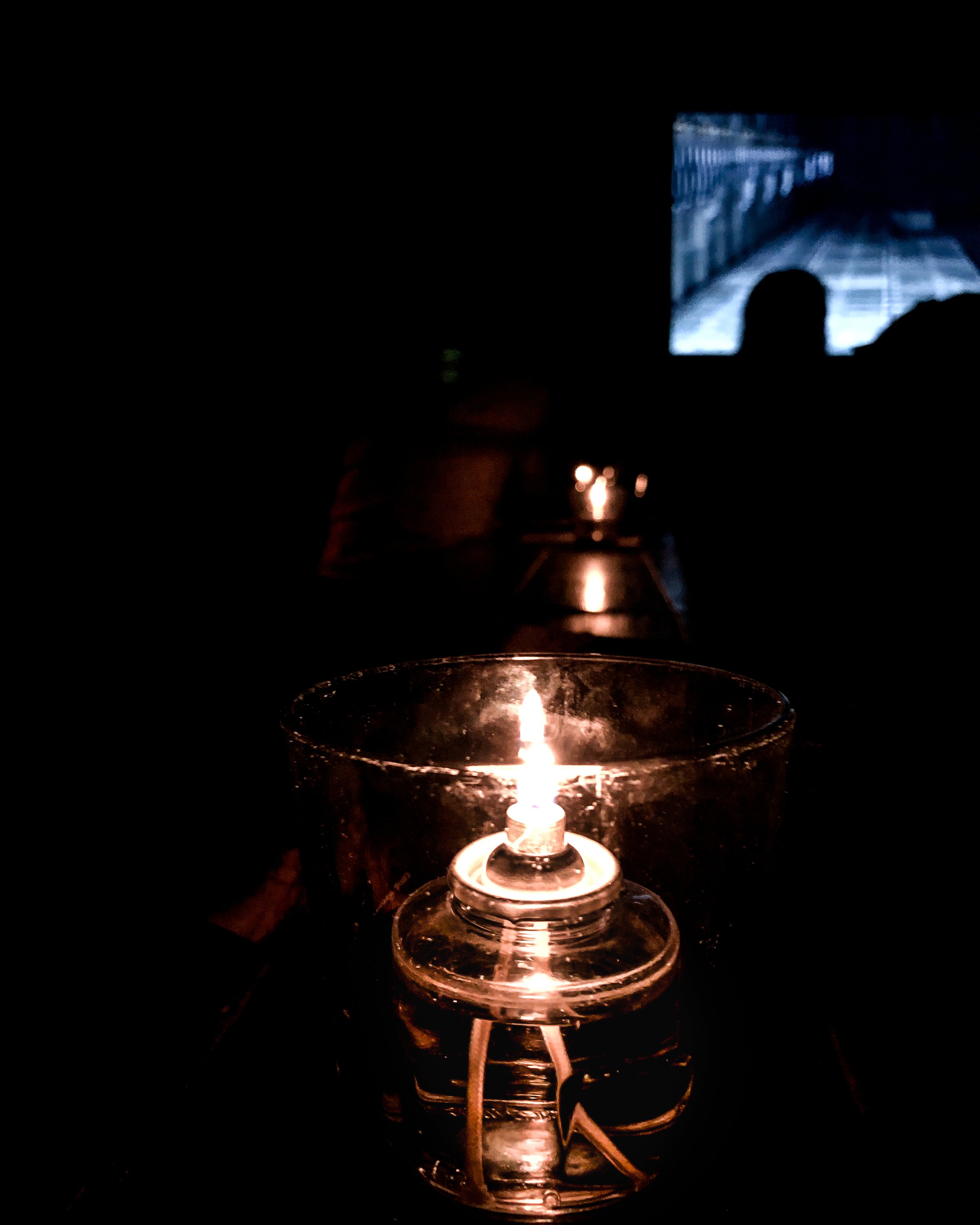Cinema in sauna, or how the MIRAGE 2022 opening night at SALT went
Feature - Arina Kosareva
MIRAGE Film Festival poster at SALT Art & Music.
Photo: Arina Kosareva / PRESSET.
Nine venues, international guests, a hand-picked collection of films from all over the world — the 2022 program of the MIRAGE film festival in Oslo is, no doubt, a delight for all cinema lovers. The opening night at SALT Art & Music on October 12, though, offered a truly unique experience, with mesmerizing live music and excitement of jumping into cold water after watching shorts in a sauna (Yes!).
The opening ceremony — warm and artistic
At 17.35, there is already a small line of people at the entrance to SALT. The weather forecast promised crispy +2℃ during the night, so many cautiously put on winter coats, woolen hats, and fluffy checkered scarves. Some have bulky backpacks, prepared to watch short films in an actual sauna — one of the highlights of this year’s MIRAGE.
After showing the ticket, every guest of the festival receives a black silky bracelet — much more convenient than those paper ones that SALT usually offers. Light, yet a little biting breeze of the Oslo fjords ruffles the floral and geometric decorations and festival posters outside, while small chalkboards help navigate the way through the art-space. Bazarr, one of the bars in SALT, is backlit with soft red and pink, and mercurial tulles separate the stage where a DJ plays some lounge music from the hall that leads to the bar. Prosecco, wine, beer — whatever you need to get the conversation going until the opening ceremony.
Winter coats and scarves away, the crowd has an artistic — almost Bohemian — air. Tweed jackets, flamboyant shirts, comfy sweaters… Bazarr feels alive, and the hum of hundreds of conversations sounds strangely cozy. It is one of these rare Wednesday nights that people get to spend with their long-lost friends — here and there you hear cheerful exclamations and see heartfelt hugs, especially valuable post-COVID.
The opening ceremony, scheduled for 18.00 sharp, is late — some technical difficulties, they say (a recurring theme of the whole night, as it will be revealed later). Finally, a stunning woman in a black dress with red flowers appears on stage. It is Racha Helen Larsen, festival & and program director of MIRAGE. She presents the program, greeting everyone who has gathered at SALT and thanking the festival’s crew and volunteers for a job well-done. And the job is well-done indeed. “You can see how much dedication and hard work everyone has put in MIRAGE,” says Tuve, one of the volunteers at the festival who joined the team three weeks ago. “We brought so many amazing artists, musicians, and directors this year. I only wish I could have the time to go to all these events.”
Lack of time is something every guest of the opening night has to deal with — a lot of events are happening at the same time:
In Spring (1929), a Ukrainian silent film with live music by two musicians from Odessa, starts at 18.40.
Almost at the same time, All of Our Heartbeats are Connected by Exploding Stars (2022) begins, a documentary/visual essay about the 2011 tsunami in Japan.
Between 19.00 and 22.00, the Hot Shorts Cinema rolls — a series of 8-13-minutes long documentaries screened in a sauna.
At 19.15, Hasse Farmen reads his poetry and plays music.
In an hour, at 20.15, Leviathan (2012), a documentary about commercial fishing, begins.
The last event — but not the least — is Burial (2022), a “magnificently beautiful film about the shutdown and burial of a nuclear power plant” with the live music by Timo Kaukolampi, and experimental musician and DJ from Helsinki.
The choice belongs to the guests themselves — there is no path one must take. You wander as you please, from one event to another, choosing whatever suits your tastes.
In Spring, a silent film about a spring in Kiev at the beginning of the 20th century
“And I remind you again, there are only 100 seats in the Pyramiden, where In Spring is going to be screened,” laughs Racha. Naturally, most of the guests rush to check this documentary out. Black metal stairs, a triangle-shaped entrance, and a small screening room with grey pillows on top of wooden rows — there is a small piano on the left side of the screen and an electric guitar on the right, the instruments to be played to accompany the film.
In Spring is a 1,5-hour long documentary by Mikhail Kaufman, a Soviet documentary filmmaker. Premiered in 1929, it features Kiev throughout the spring — how the city changes as summer approaches: what and how do people do? What was their life like in 1929? The film was considered lost until 2005, when it was discovered in Amsterdam and brought to Oslo this year together with Tromsø International Film Festival (TIFF). Lisa Hoen, its director, opens the event.
“With the situation in Ukraine these days, with all the bombings, it is very important that we can watch this film today,” comments Lisa, “especially with live music by Roksana Smirnova and Misha Kalinin, who came to us from Odessa.” Both musicians are in classic black, and both have symbols of their homeland on clothing: Roksana wears a heart-shaped brooch in the colors of the Ukrainian flag, and Misha — a golden coat of arms of Ukraine.
“One of the highlights of this documentary for me,” says Misha, “is how much of Ukrainian language there is in the 1929 Kiev. You could see how many hopes and dreams people had at that time.” Nothing could be truer than that: hopes, dreams, and, perhaps, love are indeed what the documentary is about.
Flooded streets, melting snow, cars struggling to drive, two ducks swimming with each other, couples working in a park, bakeries being opened, factories and mills running… Kiev in 1929 feels alive and eclectic, and a fascinating combination of piano and electric guitar compliments the rhythm of the city — the city that is still the same and yet so different now.
Hot Shorts event as Sauna venue in SALT Art & Music.
Photo: Arina Kosareva / PRESSET.
Hot Shorts — short films with a view
A small fireplace is set in an industrial-like barrel in front of the Sauna venue at SALT. People in swimsuits gather around it — fortunately, it is around +10℃, much warmer than was predicted. It is way past 19.00, but the Hot Shorts have not yet been launched in full. “One film began, and then the screen shut down,” explains a girl in a dark blue bikini. “A technical issue, apparently. So now we are just chilling and waiting.”
Watching films in the setting of a sauna is quite an alien experience. The air is moist and hot, the screen is quite small, and yet no one dares to go all the way up for the best experience. People leave their towels and plastic water cups on the benches and go out to jump in the fjord or in the ice-cold water in wooden barrels — to pass the time, to have fun. The Opera and the Munch Museum, lit up for the night, provide a spectacular landscape.
Finally, the first short is on — Supporting Film (2015) is a documentary about how people experience cinematography. It feels very meta, with hearing-impaired people observing that “the image says enough” and there is no need for soundtracks. Funny enough, the screen shuts down again, but the sound goes on.
Jobs for All (2021) is a Swedish documentary about the craziness of the industrial production. “It is just paper, paper, paper, paper,” says one of the interviewees of the short. It consists primarily of archival footage, therefore becoming a visual tour in the hectic production of the 20th century. Cars, computer parts, office brokers, money — and the ocean full of plastic waste as the epitome of the era of incessant production. It is an impactful and yet a very humorous film, with then-Prince Charles and Camilla applauding “all the hard workers” at its very end.
Finally, Irani Bag (2020), a touching visual essay about the intimacy of no-touch in Iranian cinematography. The main point is that even though direct touch of hands, for example, between men and women, so common in the European world, is prohibited in post-revolutionary Iran. Therefore, Iranian filmmakers use bags as “a continuation of one’s body”: a protection tool, a weapon, a symbol of lost connection.
Burial + Live music by Timo Kaukolampi
The final event of the opening night, the Burial is an audiovisual marvel. It is a story about the Ignalina Nuclear Power Plant (INPP) in Lithuania — they call it “the sister reactor to Chernobyl” — which is being decommissioned now. Its vast and empty industrial halls give off an eerie, palpable energy, making everyone sit still and simply watch.
SALT Art & Music.
Photo: Roman Demida / PRESSET.
The screening room is in Arktika, right next to Bazarr where the opening ceremony was held. It is completely dark, except small candles on long tables around which people sit. Some of them brought beer but completely forgot about it, immersed in this deeply emotional experience. Through the film, one could sense how powerful the nuclear power actually is, and the realization is both humbling and frightening at the same time.
Timo Kaukolampi is working right next to the screen. His space-like, hypnotic art is a perfect complement to the imagery of the film, making the whole journey truly immersive. The music resonates deeply in your body — somewhere in your chest, you feel these vibrations, and their memory stays with you days after the event. No wonder the ovation to Timo lasts for several minutes after the end of the performance.
As the crowd slowly leaves the screening room, they return to the red-and-pink world of Bazarr, with its lounge music and happy discussions. People gather in small groups again, and here and there exclamations are heard: “What a powerful film… How fascinating the music was…”? It is the opening night’s afterparty — the perfect time to discuss the end of the day and plan visits to other venues, such as Vega Scene or Blå. Or is it time to go home and get some sleep before another business day? Again, there is no path one must take — the choice is yours, and whatever it is, it will leave you content with the events of the day.






